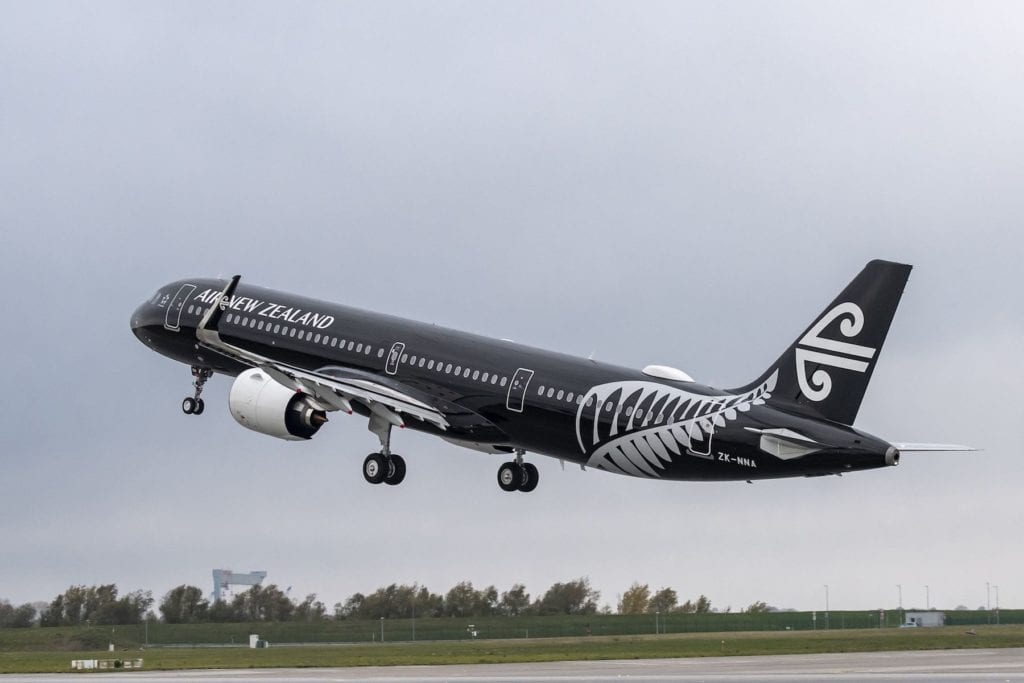
Air New Zealand’s Airbus A321neos, such as the one pictured here, are among those featuring free in-flight Internet access for passengers. Photo: Airbus
Air New Zealand has now provided more than one million free in-flight Internet sessions to passengers, since first rolling out their free connectivity trial in December 2018.
The Auckland-based carrier is still adding Inmarsat’s GX Aviation connectivity technology across its fleet of Airbus A320/A321 and Boeing 777/787 aircraft, a process that first began in October 2017. Air New Zealand first started offering free in-flight Internet access as a trial designed to last from Dec. 1, 2018 to Feb. 28, 2019, but eventually opted to extend it indefinitely to passengers flying on international routes.
“In addition to reaching the one million milestone, December was our biggest month ever for free inflight Wi-Fi sessions with more than 122,000 customers connecting. This beats our previous record of 103,000 sessions in July 2019,” Mike Tod, Air New Zealand’s chief marketing and customer officer said in a statement.
Standard Wi-Fi on Air New Zealand ranges from $20 for a full flight to Australia and the Pacific Islands, to $30 for the duration of a flight to North America, Europe and Asia destinations. There is also a 1-hour pass available for $6 on North America, Europe and Asia services.
Free in-flight connectivity access is now featured on a total of 23 Air New Zealand airliners, including five Boeing 777-300s, six 777-200s and one 787-9, as well as all 11 A320 and A321neo aircraft, predominantly flying the airline’s London, trans-Tasman, Pacific Island and North American routes.
Achieving the million-session milestone is also the latest reflection of Air New Zealand’s investment and focus on upgrading its cabin passenger experience technologies in recent years. As an example, between 2016 and 2018, the airline worked in partnership with the London-based creative studio Framestore to develop a “mixed reality” in-flight spatial computing board game that immerses passengers in a virtual three-dimensional depiction of New Zealand while wearing a Magic Leap 1 digital computer.
In 2017, the airline also started beta-testing the use of wearable Microsoft HoloLens for its cabin crew through a partnership with IT service provider Dimension Data. At the time, the carrier said it envisions a future where flight attendants use the wearable headsets to display passenger information such as flight details, time since last served and even the emotional state of the passenger.
A $2.7 billion purchase agreement for a fleet of 20 new Boeing 787-10 Dreamliners signed in May 2019 will also bring an upgrade to Air New Zealand’s long-haul passenger experience. Beginning in 2022, the 787s will replace the airline’s fleet of 777-200s, which will be completely phased out by 2025.
The airline has not stated whether the free in-flight Internet offering will become permanent for international passengers. Its remaining fleet of international aircraft are scheduled to be equipped with Inmarsat connectivity by the end of 2020. As Inmarsat prepares to add new satellites to its GX network through 2023, Air New Zealand will be one of its customers benefitting from faster in-flight connection speeds as additional capacity comes to routes it flies to destinations in Europe and the Middle East as well.
“We’re delighted with the uptake of our inflight Wi-Fi and have had great customer interest since its introduction,” Tod said.